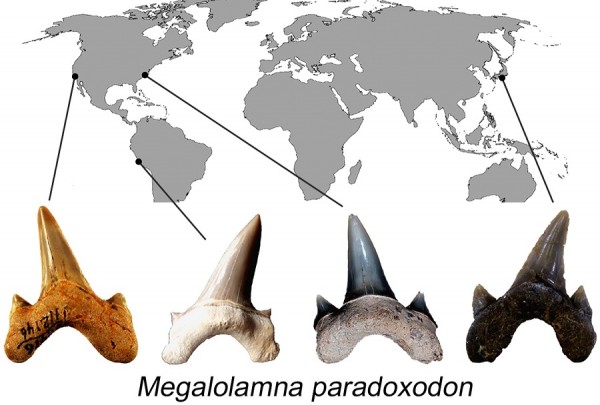By Ana Verayo, | October 04, 2016

The new shark species named ‘paradoxodon,’ or paradoxical teeth, comes from the fact that the shark appears to have emerged suddenly in the geologic record with a yet unresolved nearly 45-million-year gap from when Megalolamna possibly split from its clos
Scientists have identified a new terrifying shark species based on ancient teeth uncovered from different sites in the United States, Peru, and Japan. In a new study, scientists have revealed this extinct prehistoric shark called the Megalolamna paradoxodon.
This new shark species is classified under a family of likewise extinct sharks called Otodontidae, where the famous massive Megalodon also belongs to. This teeth evidence of the Megalolamna paradoxodon also possesses similar features to a modern day shark known as the salmon shark, Lamna.
Like Us on Facebook
Scientists created a new genus due to these similarities, to classify this truly unique species as the Megalolamna.
The largest of the Megalolamna teeth are measured around 1.8 inches and can be compared to the teeth of modern great white shark, at 13 feet long. The ancient predator's teeth were composed of two sets, one in the front to snag its prey and another set of jagged, sharp teeth to slice through flesh.
According to paleobiologist, Kenshu Shimada of DePaul University, Illinois, this discovery is remarkable as something like this massive lamniform shark that thrived in different parts of the globe has not been recognized until now.
After creating a new genus for this species, researchers also re-examined these mega-toothed creatures and re-classified the Megalodon along with its closest relatives from the genus Carcharocles to a new branch under the Otodus.
Shimada said the idea that the Megalodon and its closest cousins are now placed under the new Otodus is not entirely new. However, this study confirms its taxonomic proposition.
This new study has been published in the journal Historical Biology.
-
Use of Coronavirus Pandemic Drones Raises Privacy Concerns: Drones Spread Fear, Local Officials Say

-
Coronavirus Hampers The Delivery Of Lockheed Martin F-35 Stealth Fighters For 2020

-
Instagram Speeds Up Plans to Add Account Memorialization Feature Due to COVID-19 Deaths

-
NASA: Perseverance Plans to Bring 'Mars Rock' to Earth in 2031

-
600 Dead And 3,000 In The Hospital as Iranians Believed Drinking High-Concentrations of Alcohol Can Cure The Coronavirus

-
600 Dead And 3,000 In The Hospital as Iranians Believed Drinking High-Concentrations of Alcohol Can Cure The Coronavirus

-
COVID-19: Doctors, Nurses Use Virtual Reality to Learn New Skills in Treating Coronavirus Patients







